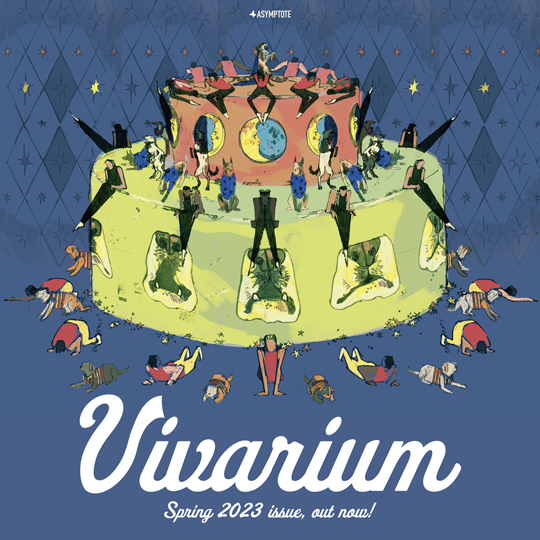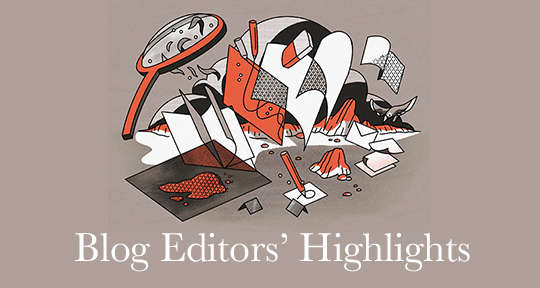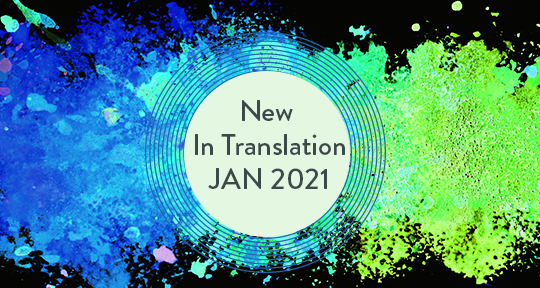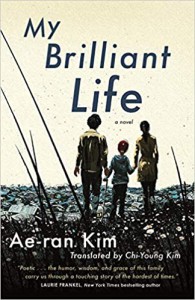Experience the world anew through non-human eyes in “Vivarium,” our Spring 2023 issue! From macaques to marmots, muntjacs to mosshoppers and microscopic prokaryotes, a superabundance of literary life overflows from 30 different countries. In this thriving biosphere, you’ll find work from Estonia and Oman flowering in the same soil as Alaa Abu Asad’s Wild Plants and our first entry from Bolivia via Pulitzer Prizewinner Forrest Gander. The same Pangaean ecosystem sustains our animal-themed special feature headlined by Yolanda González, recipient of the 2001 Premio Café Gijón Prize, and 2018 Booker International longlistee Wu Ming-Yi. Alongside these, there are the always thought-provoking words of Italian poet Franca Mancinelli, which bloom in both the Interview and Poetry section—the latter also shelters Fernando Pessoa, whose brilliant co-translators Margaret Jull Costa and Patricio Ferrari have rendered him in one of his most mordant heteronyms, Álvaro de Campos.
Language: Dutch
Our Spring 2023 Edition Is Here!

Featuring Fernando Pessoa, Franca Mancinelli, Wu Ming-Yi, and Yolanda González in our animal-themed special feature
Weaving the Intangible into the Concrete: An Interview with Mattho Mandersloot
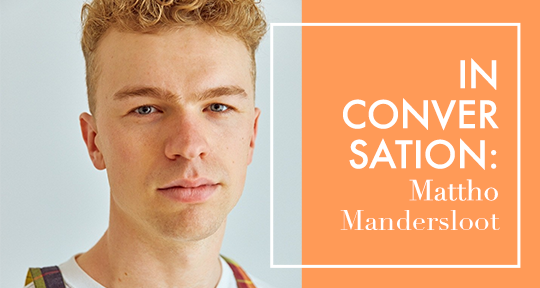
I tried to let her poetry do its work. That is to say, by trying not to explain anything, but to convey her words in their purest form.
The Korean poet Choi Jeongrye once wrote: “As you can tell from my poems, memory is both my deficiency and my mind’s ruin . . .” A powerful assertion of the poet’s battle against the intangible, Choi’s work speaks to the formless, the absent, the incoherent, and the hidden. We were proud to publish a selection of her vivid writings in our Winter 2023 issue, and in this following interview, Assistant Editor Matt Turner speaks to the translator, Mattho Mandersloot, about his process, his relationship with the poet, and the universality of these poems.
Matt Turner (MT): First, let me say how much I enjoyed these poems by Choi Jeongrye from the Winter 2023 issue; your translations conveyed the eye of the author very clearly. It was as if the poems, to paraphrase Zhuangzi, used their language in order to forget their language, and pointed towards something else—the particulars of the world maybe, or maybe the stray feelings that such particulars evoke. This gave me a sense, at least in part, of the author as a person.
One lingering question I had was about Choi Jeongrye’s place—and her poetry’s place—in the world around her, and in the literary community of South Korea. Could you say a little about that?
Mattho Mandersloot (MM): Thank you for your kind words! I think your comment about the poet shining through her work as a person is very accurate, and it is this aspect of her poetry that drew me in from the very start. The way she writes off the back of her own experiences and observations, while simultaneously touching on the world as a whole, really gets to me. Somehow, her work is both personal and universal at once.
As for her place in the literary community, I am fortunate enough to have met her several times while I lived in Korea. We had this weekly ‘poetry exchange’, where she would walk me through her version of the history of Korean poetry, and I would help her—as best I could—with some English poems that she was reading and translating at the time (something in which she took a great interest, given that her translation of James Tate’s prose poetry collection, Return to the City of White Donkeys, was published by Changbi in 2019). During these meetups, which soon turned into my favourite moment of the week, she did not hide her preference for poetic realism as she explained which Korean poets influenced which. She herself greatly took after Oh Kyu-won (1941–2007), who was known for his attempts to deconstruct language and look at ‘naked reality’. To me, Choi’s collection Kangaroo is kangaroo, I am I (2011, Moonji) always brings to mind Oh’s collection Tomatoes are red, no, sweet (1999, Moonji). READ MORE…
Weekly Dispatches from the Front Lines of World Literature
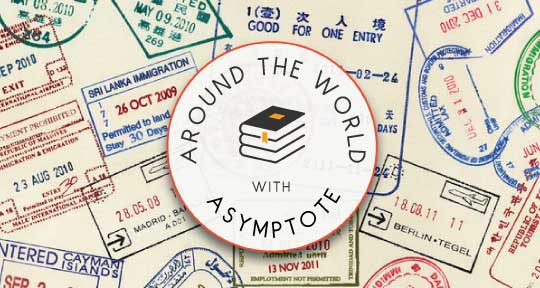
Literary news from Slovakia, Belgium, and Puerto Rico!
This week, our editors from around the world report on a controversial book prize winner in Slovakia, a comic strip festival in Belgium, and a moving performance of a collection of short stories centered on gay life in Puerto Rico. Read on to find out more!
Julia Sherwood, Editor-at-Large, reporting from Slovakia
Throughout June, ten writers longlisted for Slovakia’s most prestigious literary prize, the Anasoft Litera, presented their works online, at events in the capital, Bratislava, and the open-air summer festival Pohoda held at Trenčín airfield. However, much attention was paid to a major controversy surrounding one of the nominated books, Nicol Hochholczerová’s remarkable debut Táto izba sa nedá zjesť (This Room Can’t be Eaten Up), which depicts the relationship between a 12-year-old schoolgirl and her teacher, a man in his fifties. While there is universal agreement on the book‘s literary merits—it is among the five works on the award’s shortlist, announced on 7 September—the decision to also nominate it for the René Prize—a competition in which students of selected secondary schools choose a winner from five books—raised concerns that neither the 18-year-old students nor their teachers are equipped to handle sensitive subject without specialist psychological support. Fearing the withdrawal of funding or even lawsuits by incensed parents, the jury decided to withdraw Hochholczerová’s book from the competition, offering instead to send the book to the schools on request. While the resulting turmoil was great for sales, it has caused a rift in the literary community, put the talented young writer under a huge amount of stress, and aroused some fear that it has sounded the death knell of the René Prize.
After two years of Covid-related disruptions, the Authors’ Reading Month (ARM), Europe’s largest literary festival, organized by the Brno-based publishing house Větrné mlýny in partnership with Slovakia’s Literárny klub, returned this summer. It was hosted by venues in five cities of the Czech Republic and Slovakia (Lviv, which has hosted the festival in the past, was not on this year’s itinerary because of the war in Ukraine). With Icelandic literature as the focus of the twenty-third edition, some of the best-known Czech and Slovak writers were paired with thirty-one authors from Iceland, including Hallgrímur Helgason, Bragi Ólafsson, and Jón Kalman Stefánsson, as well as Sjón, who also attended the Slovak premiere of The Northman, the American epic action thriller based on Viking myths whose script he co-wrote with the director Robert Eggers.
The World in Transformation, The Poem in Translation

A guide to translated poetry through our archives!
If you happen to be participating in The Sealey Challenge, wherein the literary community is encouraged to read a book of poetry everyday for the month of August, then the following is a guide to translated collections that might help you meet your mark, curated through Asymptote‘s annals of world literature. And if not—consider picking up one of these authors or text anyway, for within these works are brightnesses of spirit and sensuality, ranging journeys through landscapes and psychologies, and the courage of witness and words. These bold and wondrous works show that if you want to know a language, you should seek the knowledge of its poets.
We read widely to nurture our wonders—this much is true for all of literature, but is underlined especially when reading poetry. As the particular challenge of translating this tempestuous and evasive craft continues to unfold across the pages of poets and translators around the world, the growing numbers of collections that come to meet our shelves and hands are a testament to an endless dialectic of what Kenneth Rexroth called “imaginative identification”. The translation of a poem starts with wonder, with the identification of a gleam at the centre of the words, and a fierce urge to protect it. When this intensity then survives the removal of its own language and finds an exacting home in another, the result is just as wondrous. So much is left behind in translation, this much is true and shall always be true, but what remains constant is this sense—of awe, of the sense of something having opened up, of breathlessness in front of beauty, in front of truth. It arrives with a different music, in a different voice, but it was struck with the same spirit.
In the many poets and collections that we’ve covered at Asymptote, the work always identifies with the precise tenet of poetry to be close to its language. In German poet Kathrin Schimdt’s Twenty Poems, translated by Sue Vickerman, reviewer Andreea Scridon describes how “the two poets meet in their exigency and perspicacity, their quintessentially European writing towards a determined and defined idea.” Similarly, in Chinese poet Yi Lei’s collection, My Name Will Grow Wide Like A Tree, reviewer Marina Dora Martino notes translators Tracy K. Smith and Changtai Bi’s efforts to “open Yi Lei’s private world to the possibility of dialogue.”
Some translators work closely with their poets, in constant exchange and negotiation. Filip Noubel notes how in Taiwanese poet Amang’s Raised by Wolves, translator Steve Brandbury was careful to consult the author, ensuring that she “understands the various options I have for representing that in English.” Their collaboration defied limits, resulting in “a humorous approach to these seemingly insurmountable obstacles.” Other translators do not possess such luxuries. Alexander Dickow and Sean T. Reynolds, the translators of Swiss poet Gustave Roud’s Air of Solitude and Requiem, had to work without insight from the originating mind, the poet having passed in 1976. Nevertheless, reviewer Sarah Moore exalts the work as a “powerful, superb translation from one of Switzerland’s greatest poets of the twentieth century.”
So much of the importance in these texts lies in introducing the works of vital figures in movements that changed the world. In Alice Paalen Rahon’s Shapeshifter, translated by Mary Ann Caws, we see a collection that sheds light on a multi-faceted Surrealist, whose literary output had previously been overshadowed by her achievements in visual art. As reviewer Georgina Fooks states: “. . . with the arrival of Shapeshifter, we can gain valuable insight into this remarkable poet who was one of the best of the Surrealists, despite the lack of wider recognition.” Another Surrealist giant, Giorgio di Chirico, is revived in poetry by way of translator Stefania Heim; in his collection, Geometry of Shadows, reviewer Garrett Phelps identifies “a visual mind orienting itself toward the written word: a promiscuous use of strong imagery, and waves upon waves of metaphors at the expense of a more nimble and protean style.” Also defying any singular definition is Russian sculptor and founder of Russian Conceptualism, Dmitri Prigov, whose defiant and liberated poetics have reached the Anglophone by way of Simon Schuchat and Ainsley Morse in Soviet Texts. READ MORE…
Our Fall 2021 Issue Is Here!

Featuring Octavio Paz, Sara Stridsberg, Wolfgang Cordan, and Marian Schwartz on Nina Berberova, amid new work from 30 countries!
In Asymptote’s just-released Fall 2021 Edition, “Beings in Time,” headlined by Octavio Paz and Marian Schwartz, time is painfully distended for many of the narrators in this issue as it has been for us. With Jakuba Katalpa and Wolfgang Cordan, in particular, revisiting dark chapters in recent human history, it was a deliberate choice to bookend the Fiction and Poetry sections with Patrizia Cavalli’s irrepressibly joyful “Dancing Shoes” and Ricardo Zelarayán’s thrilling narrative poem “The Great Salt Flats.” Kim Bo-Young’s I’m Waiting for You, reviewed with gusto by Cristy Stiles, sets time travelers in endlessly inventive scenarios. In Brave New World Literature, Caitlin Woolsey encounters, at age twenty-one, the timeless Bedouin oral tradition of Jordan’s people. Elsewhere, in Drama, Anna Carlier transports us to a future ecological nightmare, where “half the world is drying up” and “the other half . . . drowning,” with no way to tell if the clock is “counting up or . . . down.” All is illustrated by our guest artist the brilliant photographer Genevieve Leong.
Our wildcard Special Feature this issue spotlights the work of institutional advocates: Russia’s Institute for Literary Translation, the Lithuanian Cultural Institute, Catalan Culture’s Institut Ramon Llull, and the Literature Translation Institute of Korea agreed to take the same set of ten questions posed by our editor-in-chief. The result is a fascinating cross-cultural snapshot of the role of an otherwise mostly invisible player in world literature.
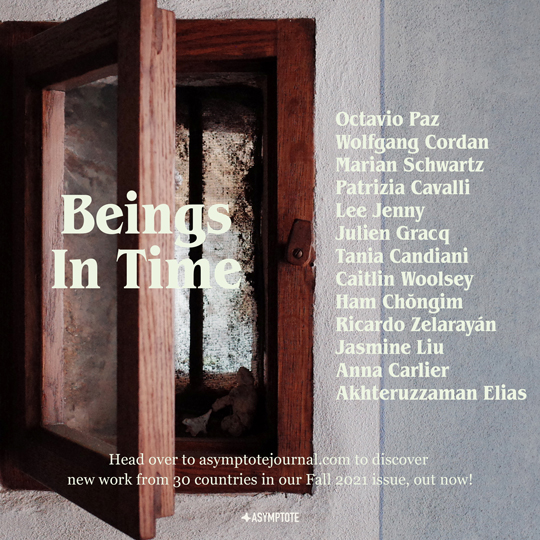
Whenever and wherever we are, we can all spread the news of Asymptote’s latest wonders on Facebook, Instagram, or Twitter, where we will be plugging every single article in a 40-hour marathon. If you’re keen to spread word in real life, we invite you to download and distribute this magnificent flyer of the issue (pictured above). Many thanks from us at Asymptote!
What’s New in Translation: October 2021
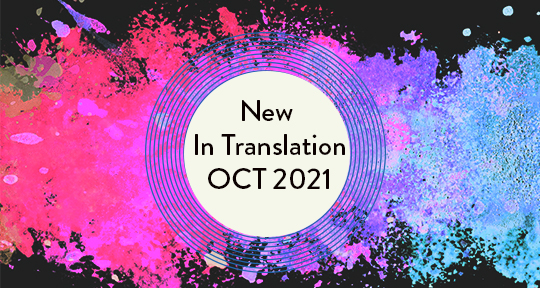
New works in translation from Poland, Croatia, and the Netherlands!
This month, our selections of the best in world literature are unified by their writers’ undeniable strength of voice and masterful control of the narrative form. From the Netherlands, a collection of A.L. Snijder’s very short stories—a genre invented by their author—revels in the unreal natures of our reality. From Croatia, the dark humorist stylings of Robert Perišić masterfully delineate the unrealiable boundaries of nations and psychologies. And from Poland, reporter and writer Margo Rejmer brings us a rare and intimate glimpse at Communist Albania under the fractious rule of Enver Hoxha, from the people who lived through it.
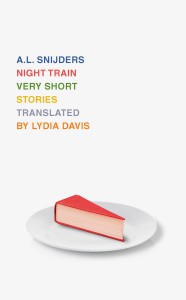
Night Train by A.L. Snijders, translated from the Dutch by Lydia Davis, New Directions, 2021
Review by Thuy Dinh, Editor-at-Large for the Vietnamese Diaspora
“For more than fifty years I have cherished one wish: to travel. This wish is part of another wish: for reality without reality—stories that are indistinguishable from the truth.”
—A.L. Snijders, “Baalbek” from Night Train
The key to understanding A.L. Snijders’s very short stories (dubbed zkv—zeer korte verhalen) lies inside “Baalbek,” where the Dutch author connects his desire to visit Lebanon’s ancient Roman outpost with creating stories that depict “reality without reality.” The Stone of the Pregnant Woman, a megalith found in Baalbek and enshrouded with otherworldly presence, represents the perfectly magnified symbol for Snijders’s miniature approach. His Night Train—a collection of ninety-one zkv translated by Lydia Davis—is a shapeshifting amalgam of fable, zen koan, commentary, lyrical essay, and autobiography. As an immersive foray into the unknown, the instability of Snijders’s narrative form produces a trompe-l’oeil effect “indistinguishable from the truth,” giving the reader a sensation of being at once disoriented and illuminated.
Born Peter Cornelis Müller in 1937 in Amsterdam, Snijders came from a large, bourgeois Catholic family. The dual forces of freedom and order constitute the main themes of his life and work. Artistic and cosmopolitan, Snijders nevertheless chose a stable career teaching at a police academy and led a placid life as a gentleman farmer in rural Achterhoek, Holland’s eastern region. Even after being awarded the Constantijn Huygens Prize in 2010—one of the three most prestigious literary honors in Holland—Snijders did not, for years, deviate from the low-key routine of reading his work on an early morning radio show and circulating his steady flow of zkv among an email list of loyal readers. Ever industrious, he passed away this past June while working on new material.
The commonplace in Snijders’s oeuvre is imbued with mystery. In “Minor Characters,” Snijders’s alter-ego wonders if his compressed fiction may actually be “unpsychological novel[s] for people who understand nothing about psychology.” If reality resembles an unseen but anarchic mole emerging each night to turn Snijders’s garden into a surrealist landscape (“Mole”), then the author’s aesthetic philosophy suggests holistic means to affirm “what can never be understood.” This notion of reality as unknowable, or “unpsychological,” represents the trademark of Snijders’s fiction, allowing his narrative—as both burrowing animal and spy—to elude conventional expectations and assume an enigmatic depth, despite its compact form. READ MORE…
Brussels Planetarium Poetry Fest—A Unique Experience in the Heart of Europe
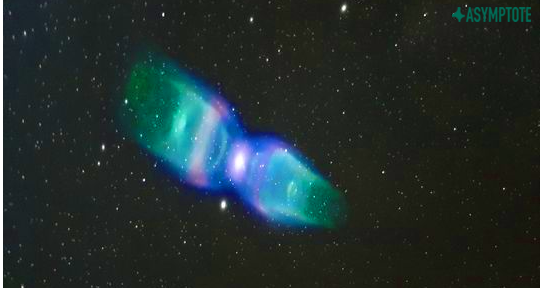
[T]he Planetarium’s technicians have in fact “translated” the poets’ “texts and recordings” into the projections.
Since 2014, the Brussels Planetarium has been host to a poetry festival that wrangles in the celestial forces to commune with language. The resulting event is a brilliant amalgam of performance, verse, and media, with the latest in immersion technology being applied to transport the audience into the land- and soundscape of the poet’s imagination. This year, our Editor-at-Large MARGENTO reports from the festival, giving us a close-up of the works that lent the city their magic, and the global consciousness a sense of poetry’s endless potentials in the technology age.
Whether in hangover or relapse, (post?)pandemic times seem to be bringing about a bruised euphoria of collectivity and in-person proximity. If not packed concert halls, then outdoor gigs; if not crowded pubs, then nicely scattered and still-animated patios. In the meantime, artists and writers seem even more eager to embrace collaboration or collective action in reinvigorated ways that are nevertheless pungently critical of (post)pandemic prospects of communal life and culture. This year’s edition of Brussels Planetarium Poetry Fest intriguingly captured all of these trends while putting poetry, the arts, science, and, most urgently, the (post)human condition in perspective.
And I mean literally so. The unique venue of the Planetarium and its 3-D affordances can offer a unique experience and a “cosmic” medium poetry has perhaps always striven for, but has rarely had the opportunity to enjoy so palpably. And it is no coincidence that the festival itself has been organized there for eight annual editions (including in the midst of the pandemic in 2020). Indeed, it is not only that the name of the curator himself, Philip Meersman—poet and coordinator of the World Poetry Organization—aurally resonates with “immersion”; the concept has in fact been a long-standing preoccupation with the Belgian slammer, materializing in events such as Brussels Planetarium Poetry Fest or the Inclusive World Poetry Slam Championship (and also a PhD project he is working on at KASK Antwerp on visual poetry as… immersive experience). In his prefatory note in the festival’s programme, Meersman places the theme of the festival—the possible “dialogue between science, religion, immaterial heritage. […] (de)colonization, and white masculinity”—naturally in a celestial context, as “stars guide our most intimate ceremonies” towards a question that he deems prophetic: “How will you remember me?”
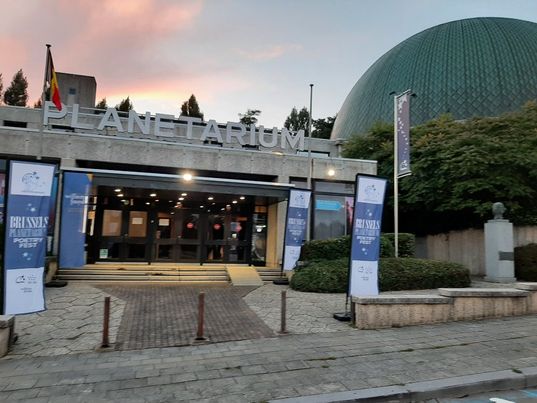
On both nights of the festival, therefore, the audience found themselves from the very beginning plunged into an enveloping dark and then instantly hurled into a 3D, 360-degree dome projection that “physically” took them on an overwhelming multidirectional voyage across the universe and among celestial bodies and meteorites. What was even more impressive was that these projections were not simply Planetarium material played as (random) backdrop to poetry acts, but a shrewdly planned and accomplished fusion of the two that involved visuals—contributed by the poets themselves—embedded into, dialoguing with, or even deconstructing the all-engulfing astronomical vistas. As the website puts it, the Planetarium’s technicians have in fact “translated” the poets’ “texts and recordings” into the projection, drawing on existing material but also “specially acquired images, 3D-projection models, photos, and results of scientific research” (my emphasis). READ MORE…
Translators Weigh In on the Amanda Gorman Controversy
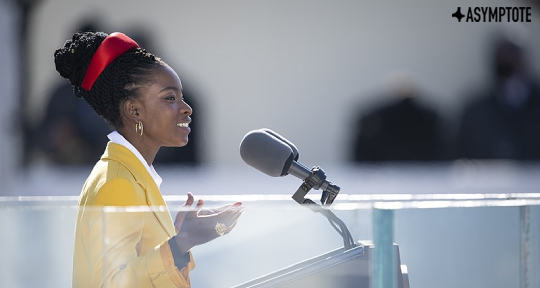
The incident sparked industrywide conversation about who gets to translate.
The Amanda Gorman translation controversy is a mess.
— Aaron Robertson (@augiewatts) March 12, 2021
On March 1, The Guardian reported that Amanda Gorman’s Dutch translator, Marieke Lucas Rijneveld, had quit. Amanda Gorman, the poet who catapulted onto the world stage after an astounding performance at U.S. President Joe Biden’s January inauguration, had approved Rijneveld, an acclaimed Dutch writer, themselves, but the announcement that Rijneveld would translate Gorman’s book The Hill We Climb provoked backlash. READ MORE…
To Make Sense, Against All Odds: An Interview with Connie Palmen, Author of Your Story, My Story
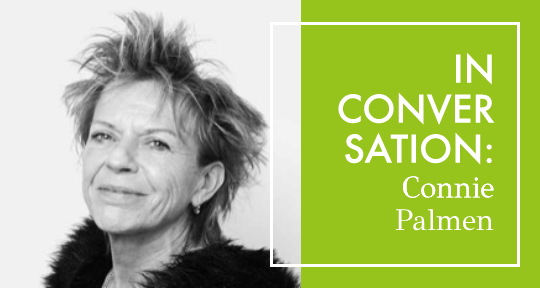
In writing you unwittingly expose your most intimate voice, your soul. It’s beyond control.
There’s something about Sylvia Plath—the brevity of her life, the tragedy of her death, the haunting work she left behind. In the nearly six decades since her passing, she has remained an imposing figure in literary culture, romanticized and politicized and psychoanalyzed to excess. Plath’s relationship with English poet Ted Hughes, whom she married in 1956, has also endured as an object of public fascination. Their partnership was tempestuous—strained by Plath’s mental illness, Hughes’s infidelity, and the demands of the writing life. Yet on the outside, they were two beautiful, talented writers, bound by love and poetry.
Dutch author Connie Palmen’s latest novel, Your Story, My Story, translated by Eileen J. Stevens and Anna Asbury, uses Plath and Hughes’s ill-fated marriage as a vehicle for larger questions about lust, loyalty, and grief. Palmen wrote the novel as she mourned her husband’s death, and explored her pain through the character of Hughes, who narrates the novel while grappling with the death of his own wife. Palmen, Stevens, and Asbury have achieved remarkable success in bringing Hughes’s literary voice to the page; reading Your Story, My Story feels like reading straight from Hughes’s diary. The prose is lovely, the emotions raw. But the novel’s existence also poses interesting ethical questions.
Originally published as Jij zegt het in 2015, Your Story, My Story is written from Hughes’s perspective, Palmen’s intention being “to tell Ted’s side of the story.” As a narrator, Hughes explicitly posits that he has been unfairly vilified in contemporary discourse (“She was the brittle saint, I the brutal traitor,” reads an excerpt on the front flap. “I have remained silent. Until now.”). This is possible. But Plath’s recently discovered letters, in which she makes allegations of assault and abuse against Hughes, tell another story. Jij zegt het was published before these letters were made public; still, what is there to be gained by ventriloquizing the dead?
Between Palmen and I there is a divergence of opinion regarding the ethics of this endeavor. The fictionalized Hughes condemns “the mudslide of apocryphal stories, false witness, gossip, fabrication, and myth” that shaped the couple’s legacy, but Palmen adds to this mudslide by producing a work of fiction that promises to deliver “the truth of [the Plath-Hughes] marriage” and “forever change the way we think about these two literary icons.” Turning a historical figure’s life into fodder for fiction is another form of speculation, but Palmen seems unbothered by the irony. And regardless of Plath’s credible allegations (the veracity of which Palmen doubts), the business of writing a whole novel to vindicate Hughes—who in the book weathers Plath’s erratic outbursts and volatile temperament with saintly patience—feels fraught.
Nevertheless, Your Story, My Story is an engrossing and often elegant novel. Palmen, Stevens, and Asbury replicate Hughes’s writing style with startling authenticity, and Palmen deftly draws out internal conflict in her characters. The premise may be questionable, but the craftsmanship is undeniable. I enjoyed the novel most when I read it as a mesmerizing portrait of an imagined relationship, rather than as an assertion of Hughes’s innocence or a historical corrective, as it seems marketed to be. I recently spoke to Palmen about her writing process, artistic choices, and stance on biographical storytelling.
—Sophia Stewart, Assistant Interviews Editor
Sophia Stewart (SS): Your very first novel De wetten came out in 1991. It went on to be translated and published in twenty-four countries, including the United States, where it was released as The Laws in 1993. Rarely do debut novelists find this kind of immediate international success. Were you surprised at all by the reception of your first novel? How did its success influence your writing and the books you wrote in the years after?
Connie Palmen (CP): It may, and most certainly does, sound arrogant, but I wasn’t overly surprised. I knew I had written a novel that was new and different, and that I wrote about a very twentieth-century coming-of-age of a woman. It has only been a short time since the search for identity has been regarded as not just a male quest, and in my novel this quest is also connected to knowledge, to stories. Women could recognize themselves in their struggle to learn and to find some kind of autonomy, and men would recognize their desire to define the world and the women in it. The novel has its roots in the literature of rebellions, as in the saga of Faust, who sells his soul to the devil to become a great artist. My main character Marie lets herself be defined by the men she meets till she has the courage and independence to tell her own story. A first novel is crucial, because it is an encounter with yourself as a writer. The book is a meeting, it discloses your style, your themes, your thinking, your idiosyncrasies, not just to the readers, but mainly to yourself. Only your first novel does that. From that moment on, you know. READ MORE…
The Queen’s Argot: The Language of Chess Around the World
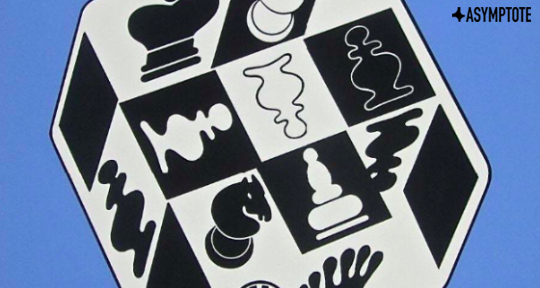
Players worldwide understand the pieces . . . but our understanding . . . depends in part on what we call them.
Netflix miniseries The Queen’s Gambit illustrated the international culture of chess. As it turns out, the game’s spread around the globe is a story of translation. In this brisk and brainy rundown, Editor-at-Large Allison Braden tackles its evolution through time and space, setting up a board in which pawns can be farmers, bishops can be fools, and queens can be counselors.
In December of last year, Netflix miniseries The Queen’s Gambit smashed viewership records for a limited-run series on the site. In the show’s first month of streaming, over 62 million people around the world tuned in to the story of a young woman who overcomes several challenges in her quest to become a world chess champion in the 1960s. The series was based on Walter Tevis’s 1983 novel of the same name, and like readers before them, viewers rooted for plucky chess prodigy Beth Harmon. Her eventual triumph was, for many, a bright spot at the end of a long and difficult year.
You won’t become a grandmaster by watching the series. (In fact, one of the only aspects of the show that pro chess players took issue with was the speed of the games. In a concession to viewers, they were faster paced than matches at real tournaments.) But The Queen’s Gambit is a crash course in the culture of chess. It’s fiercely competitive, requires visual and strategic intelligence, and remains extremely male dominated (despite studies showing men aren’t inherently better at the game). Chess is also truly universal—and where there’s an international pastime, there are translators.
In the show, Harmon travels to Mexico, France, and the USSR. As her skill grows, her competitors increasingly hail from foreign countries, and as it becomes clear that the ultimate test of her ability will come in Moscow, she begins to study Russian. In the heady final scenes, commentators relay her moves in a variety of languages for listeners around the world. After The Queen’s Gambit was released, interest in chess boomed. One of the most popular ways to play is online. Chess.com boasts users from dozens of countries, and they can all play one other. Like many sports, chess transcends language; in a way, it is its own language. Players worldwide understand the pieces: the king’s hesitance, the queen’s might. The bishop, which can only move diagonally, speaks his own sideways tongue. READ MORE…

